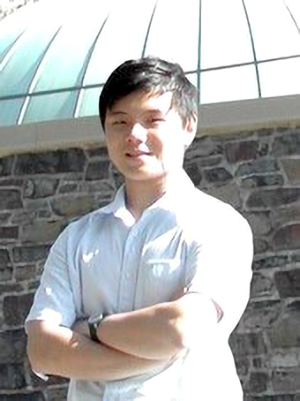USTC Astronomy Colloquium Series: 2022 Fall
Constraining the Cosmic Partition of IGM and CGM Baryons with FRB Foreground Mapping
Khee-Gan Lee Assistant Professor
IPMU, 东京大学
2023/01/03, 4:00pm , TencentMeeting ID:707-902-896

报告人:
Khee-Gan Lee, is an observational cosmologist originally from Malaysia. His primary research interest is on studying the large-scale distribution of gas and galaxies in the distant Universe. Since this “cosmic web” reflects initial inhomogeneities that were laid down immediately after the Big Bang, his research helps constrain the fundamental physical parameters of the Universe. In particular, his speciality is in tomographic 3D mapping of hydrogen absorption during the “Cosmic Noon” period 10 billion years ago. He is an experienced observer with the Keck telescopes, and is helping plan future spectroscopic surveys using the Prime Focus Spectrograph on the Subaru Telescope.摘要:
The frequency shifts measured in extragalactic Fast radio bursts (FRB)s probe the total column of ionized gas in the foreground, including large contributions from the CGM and IGM. By combining this information with both deep and wide spectroscopic observations of foreground galaxies, the information content is enhanced. The wide-field data (∼10s of Mpc scales) allows us to reconstruct the underlying cosmic web that underlie the IGM gas, while the deep data within <1Mpc allows a census of the potential CGM contributions. With this kind of data on an ensemble of FRB fields, we will be able to constrain the relative partition of ionized baryons in the IGM and CGM, as well as the typical extents of the latter. These quantities reflect the imprint of galaxy feedback in expelling gas from galaxy halos. I will describe FLIMFLAM, a follow-up spectroscopic program that is aimed at observing ∼20 localized FRB fields, and provide forecasts for future surveys. 邮编:230026 ,
邮编:230026 ,  联系电话: 0551-63601861
联系电话: 0551-63601861 Email:
Email: